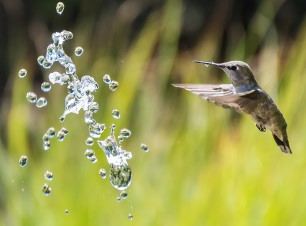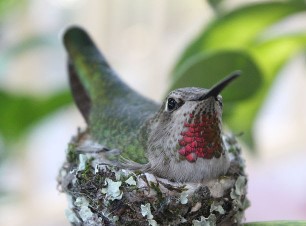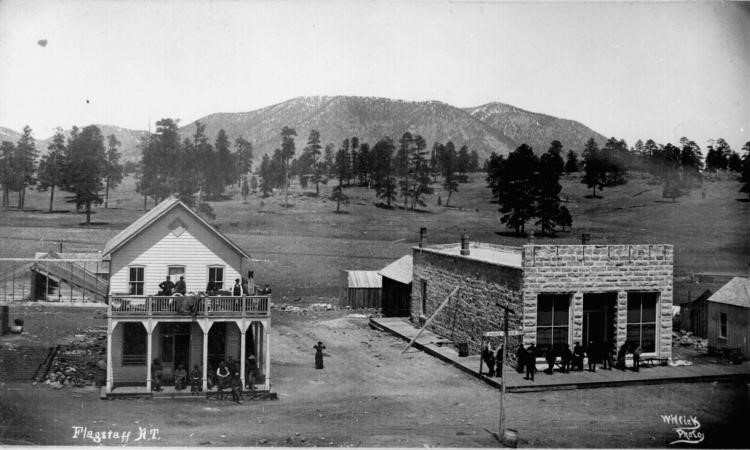Realty Executives of Northern Arizona
The lava tube cave in Flagstaff, Arizona, is a fascinating geological feature that offers visitors a unique opportunity to explore underground passages created by ancient volcanic activity. Here's a closer look at this natural wonder:
Formation
The lava tubes were formed thousands of years ago during volcanic eruptions in the San Francisco volcanic field, which covers much of northern Arizona. As molten lava flowed from the volcanoes, the outer layer cooled and solidified into a tube-like formation. This newly created tunnel filled with molten lava. Once the lava stopped flowing, it cooled and left behind a ¾ mile-long tunnel for anyone brave enough to explore it. This 700,000 year old formation remains a cool 35° - 45° F even in summer.
Location
The Lava River Cave, located within the Coconino National Forest, is easily accessible via Forest Road 171, just a short drive from downtown Flagstaff. The cave entrance is marked by a sign, and a short hike leads visitors to the mouth of the cave. However, the Forest Roads are closed in winter, so to access in winter you will need to ski, snowbike, or hike 4.5 miles from Highway 180.
The road to the main parking lot is well-maintained. The approach from the parking lot to the entry of the Lava River Cave is a flat, hard-packed trail that is less than ¼ mile long.
Exploration
Exploring the lava tubes is a thrilling adventure that appeals to both novice and experienced spelunkers. Inside the cave, visitors will encounter a dark and otherworldly environment, characterized by narrow passageways, towering rock formations, and eerie silence.
As you venture deeper into the cave, you'll have the opportunity to marvel at unique geological formations, such as stalactites, stalagmites, and lava shelves, which have formed over thousands of years. The temperature inside the cave remains cool year-round, making it a refreshing escape from the desert heat during the summer months.
Being in mostly good physical condition is appropriate. The first 300 ft of the cave is composed of loose, often times slippery boulder rocks that will require some scrambling. You will need to use your hands, feet, and even sit on rocks for stability. There are points in the cave where the roof gets low. You may need to crouch or even crawl.
Safety
While exploring the lava tubes can be an exhilarating experience, it's important to prioritize safety at all times. It's also advisable to bring plenty of water and snacks, as well as a first aid kit in case of emergencies.
Wear warm clothing and sturdy footwear with good traction to navigate the uneven terrain, and be mindful of low ceilings and tight spaces within the cave. Optional: you could bring a helmet.
Most importantly, you will need 3 sources of light including a flashlight, headlamp, lantern, etc. This is because the rock floors tend to be a combination of slippery and dark. If your light source fails, you will experience pure, pitch-black darkness. It is the kind of dark where you cannot see your hand even if it is touching your nose!
Conservation
Preserving the natural beauty and integrity of the lava tubes is crucial for future generations to enjoy. Visitors are encouraged to practice Leave No Trace principles by avoiding littering, staying on designated trails, and refraining from touching or removing any natural formations within the cave. Pets are not allowed in the lava tubes.
Camp Colton does educational school programs in the cave and the experience is a rite of passage and an awesome adventure to all Flagstaff sixth graders.
Final Thoughts
The lava tubes in Flagstaff offer a captivating journey into the depths of the Earth, where visitors can witness the incredible forces of nature that shaped the landscape millennia ago. Whether you're a seasoned adventurer or a curious explorer, a visit to the lava tubes promises an unforgettable experience that will ignite your sense of wonder and appreciation for the natural world.
When you're ready to buy or sell in northern Arizona, Come See Us!
Nestled at 7,000 feet near the base of the San Francisco Peaks, Flagstaff reigns as the mountain jewel in the crown of the desert state of Arizona. It beckons with its clear air, cool pine forests, and proximity to historic and natural attractions. Flagstaff is a region settled by varied cultures and built by strong men and women pioneers that made this city what it is today.
The Coming of the Railroad
The days of isolation ended for the Flagstaff area when in 1880, the Atlantic and Pacific Railroad began to lay track westward from Albuquerque on its way to California. Entrepreneurs quickly found they could capitalize on the railroad's construction crews by selling food, supplies and entertainment from the supply camps they set up along the line.
As the rails neared the San Francisco Peaks, a small settlement began to take shape by a small spring on the slope of what is now called Observatory Mesa (or Mars Hill), just west of today's downtown Flagstaff. In early 1881, merchants and saloonkeepers set up shop for the advance parties of workers who were coming to grade and cut ties in the abundant Ponderosa forest. That same year the citizens of the little camp called their new town Flagstaff, in honor of the landmark. By the fall of that year, Flagstaff boasted a population of 200 and swiftly became a wild railroad town filled with saloons, dance halls and gambling houses.
On August 1, 1882, the railroad finally reached Flagstaff. As the construction crews moved westward to California, some of Flagstaff's citizens followed after them, but others stayed, hoping that the camp could continue to thrive. Fortunately for those who stayed, Flagstaff became an established stop for water servicing the railroad and its passengers. Sheep ranchers began to use the railroad to transport wool; and cattle ranchers, drawn by the prospect of free or inexpensive land, realized that they could now affordably ship their beef to the eastern market.
Businessmen such as E.E. Ayers set up Flagstaff's largest lumber mill before the railroad got to town, and began shipping lumber within days after the rails arrived. By winter 1882, Flagstaff was a firmly established town with a railroad, livestock and lumber industries, and a service industry of merchants, cafes, hotels and saloons to serve the sheepherders, cowboys, lumberjacks and train travelers.
Stay tuned for Part 3: A Tale of Two Towns!
Come see us in historic downtown Flagstaff when you're looking to buy or sell your home!
Our office members pride themselves on being active participants in our local communities. One recent example of this is Tammara Prager, who is a member of the International Hummingbird Society. Just recently, July 26th-28th, the annual Hummingbird Festival took place in Sedona. Among the activities of the festival, there is a garden tour. Tammara was a garden host this year for the festival, where visitors came and sat in her yard to enjoy the hummingbirds in action. Tammara’s garden is a certified Hummingbird Haven, and you can see the certification requirements below. She is also a silver level sponsor. Did you know there are 8 critically endangered species of hummingbird?
More about the International Hummingbird Society:
Mission Statement: Teaching about hummingbirds and working internationally to protect them.
Conservation: The hummingbird is a tiny but powerful voice for conservation. The Society supports conservation projects and educational efforts designed to protect these tiny vulnerable treasures, so they will thrive and continue to delight us with their luminous colors and acrobatic displays.
Sedona Hummingbird Festival: The yearly three-day festival is bountiful in education. Presentations by world experts, demonstrations of hummingbird bandings. Hummingbird garden tours offer a wealth of ideas and information for you to take home. The festival’s Hummingbird Marketplace is sure to delight those looking for treasures.
Requirements to be a Certified Hummingbird Haven:
FOOD. Select and plan native plants that attract and nourish hummingbirds with nectar. The addition of feeders can enhance their natural diet.

WATER. Hummingbirds love water to bathe in and drink from. Incorporate a water feature with rocks and shallow pools to mimic natural streams.
SANCTUARY. Establish a refuge by providing trees and bushes for resting and nesting. Keep them protected by removing any pests and your garden cat-free.

Their website is https://www.hummingbirdsociety.org/
And if you are looking to buy or sell in Sedona, reach out to Tammara!
I hope you are enjoying a sun-kissed, restful summer. While I'm sure you have been spending time outside in our beautiful weather, you may have also seen the news or followed the real estate changes on social media. Some stories have correct information while others seem to exaggerate or have the facts completely wrong. This month I thought I'd cover the general changes.
First and foremost, I have and will continue to provide full-service to my clients. There will be brokerages and agents who will provide limited service with varying commission agreements. This has always been the case. Consumers have a choice in representation - full-service or limited representation. I like to think of it as Supercuts or a hair salon. Both offer haircuts but at differing levels. The important thing to know is that you have a choice.
Secondly, if you are selling your home, the compensation to the buyer's broker will not be in the MLS. We will be discussing the commission or compensation you agree to pay my brokerage. Then we will discuss the amount of compensation/commission you would like to offer the buyer's broker/agent. In the past, this has been a lump percentage that is divided between the seller's broker/agent and the buyer's broker/agent. We have discussed this split but now the two amounts are separated on different documents. The media has implied or even out-right stated that buyer's agents will no longer be paid by the seller. This is a possibility. However, it is still a good practice to offer this compensation to the buyer's broker as the buyer tends to have many other costs such as down payment, loan costs and closing costs. Please know we will spend time talking through the many options when it's time to list your house.
Finally, I will ask all potential buyers to sign a representation agreement. I have used the Buyer-Broker Employment Agreement throughout my entire career. The signing had taken place nearer the time when the buyer was ready write an offer on a property. The new regulations require these to be signed before showing a property. There are 3 different Agreements each with varying time periods and conditions. Please let me assure you that we will discuss the best option for you at the time you are interested in looking for a house. The media has called these forms "contracts" and to a degree they are contracts. However, I prefer the term "representation agreement". Negotiating is a part of buying a house. This includes purchase price and terms as well as my compensation. This is the most misunderstood part of the new regulations so please do contact me with questions.
While there will be some hiccups as we all navigate through the changes, please know that my commitment to you remains the same. I promise to provide exceptional service to each of you as your trusted agent.
One more exciting thing..... Realty Executive of Flagstaff is now Realty Executives of Northern Arizona! This new name better reflects the communities we serve. Along with this new brokerage name, I have changed my website to HighlandLivingAZ.com.
Please don't hesitate to contact me if you have any questions or if you would like to sit down with a cup of coffee and discuss the changes or our local real estate market.
Nestled at 7,000 feet near the base of the San Francisco Peaks, Flagstaff reigns as the mountain jewel in the crown of the desert state of Arizona. It beckons with its clear air, cool pine forests, and proximity to historic and natural attractions. Flagstaff is a region settled by varied cultures and built by strong men and women pioneers that made this city what it is today.
A Stripped Pine Tree Becomes a Landmark

Soon after Arizona became American territory from Mexico in 1848, the U.S. Congress began to explore the Nation's new territories, sending out various parties to find resources, make maps and locate paths. Between 1857 and 1860, Lt. Edward Beale was sent to build a road across northern Arizona. He sent glowing reports to Congress, telling them how the Flagstaff area was rich in grasslands, water and timber.
Once the Beale Road was established it became well traveled by emigrants going to California. The travelers noted Flagstaff's resources as a treasure chest, but its isolation meant no nearby markets for farm products, meat or lumber and no way to ship goods to distant markets.
One such party of emigrants came from Boston in 1876. Originally planning to settle in the Little Colorado River area near Winslow, they found the area already settled and decided to move on to California. On July 4, 1876, the group camped at a small spring with the peaks looming overhead. In honor of the nation's centennial, they stripped a pine tree of its branches and bark and raised an American flag. When they moved on, their "flag staff" became a landmark for those who followed.
That same year, a small group of sheep ranchers moved to the area and set up their ranches where they found grass and water. The isolation of the area was not a problem to them because wool did not spoil and could withstand the long, rough journey to market in Boston.
Stay tuned for Early History of Flagstaff Part 2: The Coming of the Railroad!
Looking for more information on the housing market in the Flagstaff area?
Come see us, in historic downtown!